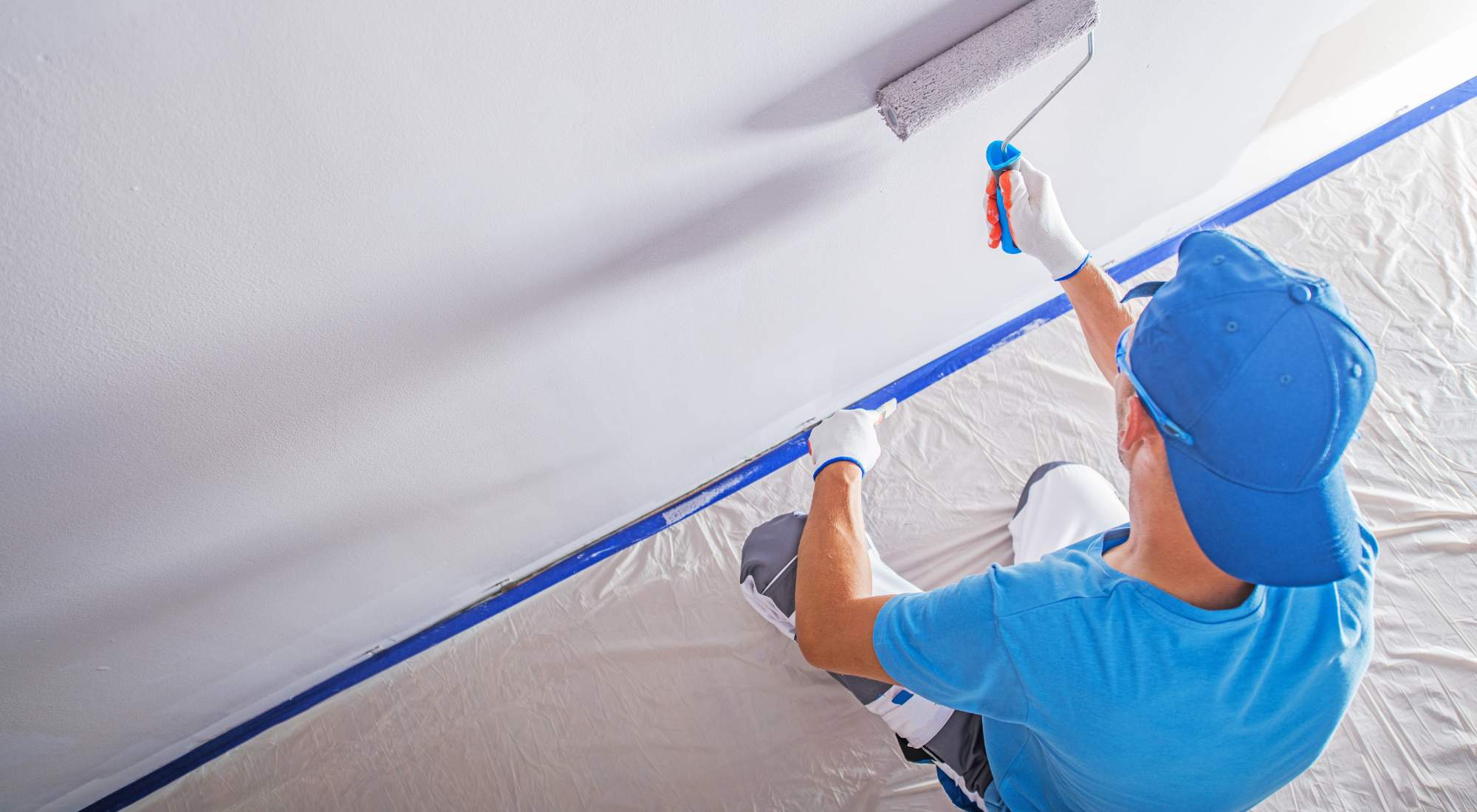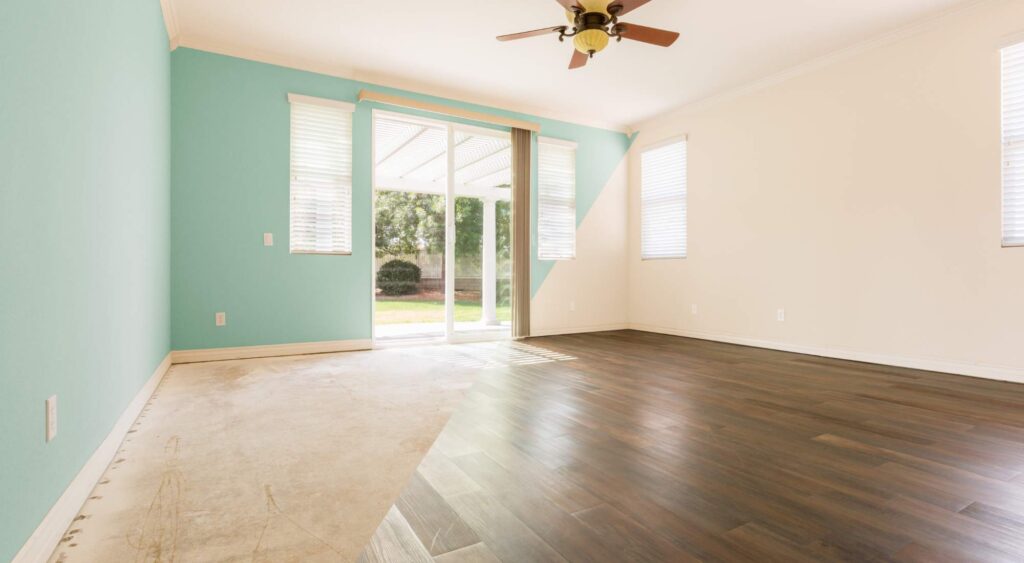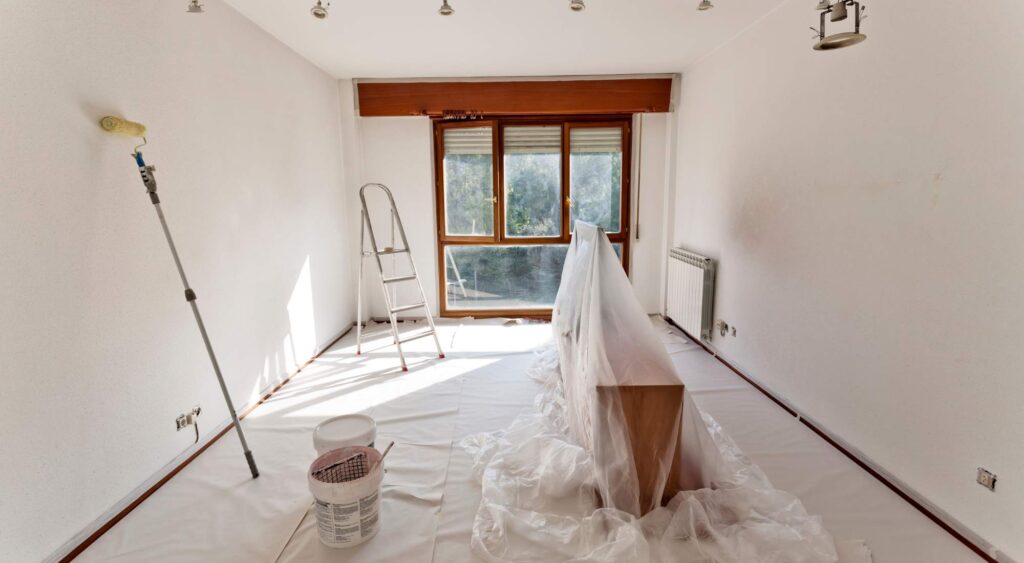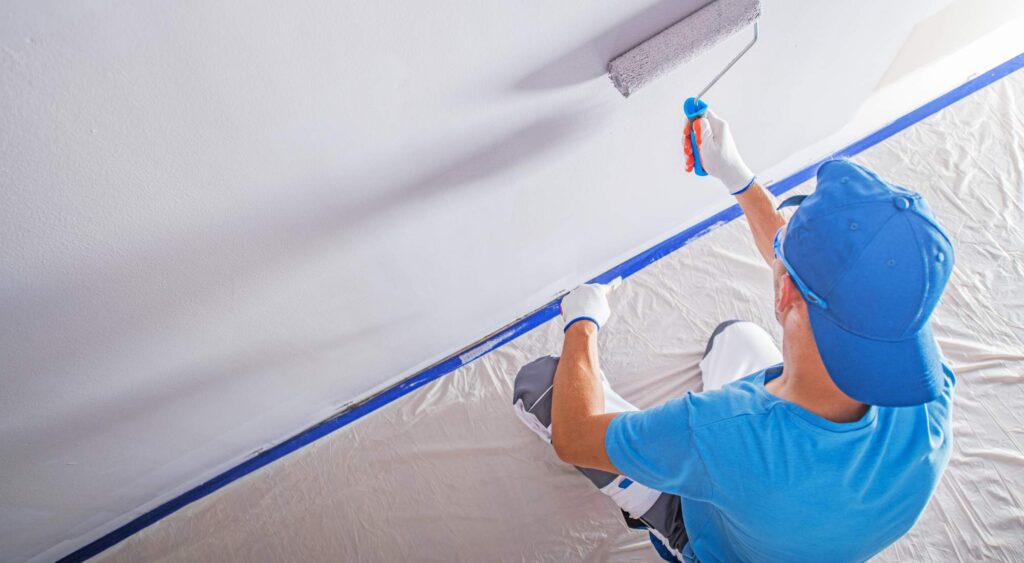Whenever you sit down on the couch, that 1950s floral wallpaper is staring back at you.
Whenever you try to relax in your bedroom, the bright, bold color choice of the previous owners is anything but tranquil.
You have to do something to remedy the situation, to update the home and make it your own.
But how much will it cost?
We will discuss all of the factors that contribute to the cost of painting a home’s interior and tips to help cut the cost while making a worthwhile investment in your home.
Table of Contents
- How To Calculate Interior Painting Cost
- 8 Variables Affecting the Cost of an Interior Paint Job
- What Else Do Contractors Factor Into Their Prices for Home Interior Painting?
- Tips To Help Cut the Cost of Painting a House Interior
- Two Brothers Painting: Performing Interior Paint Jobs Worth Your Investment
How To Calculate Interior Painting Cost
How much it costs to paint the interior of a house depends on a variety of factors. The square footage of your home is the biggest influence on cost, but other factors such as the type and quality of paint, the number of coats required for great coverage, and special considerations such as high ceilings contribute to the cost as well.
To calculate how much an interior paint job will cost, determine the square footage of the rooms to be painted. Divide the square footage by the number of square feet a gallon of paint will cover, and that will determine how many gallons of paint you will need to purchase. Then multiply the price per gallon of paint to get an idea of the total cost without labor.
If you are feeling intimidated by the scope of your interior paint job, the experienced professionals at Two Brothers can conduct an assessment of your space and provide an estimate. We are trusted Portland painting experts who can get the job done!
8 Variables Affecting the Cost of an Interior Paint Job
Many variables contribute to the cost of interior painting; therefore the overall price can vary widely.
#1: Square Footage
Whether you are painting one room or your entire house, the square footage in your home is the biggest factor impacting the cost of painting the interior.
Not only do larger rooms require more paint, but they also take longer, directly affecting the price of labor.
If the rooms you need painted have high ceilings or intricate trim, the job will also require more paint and time. Rooms such as bathrooms and kitchens may cost more due to the amount of special fixtures and surfaces that would require more prep work.
The average cost to paint a house interior ranges from $2–$6 per square foot.
Choosing to only paint the walls typically results in a cost of $1–$2 per square foot, whereas including walls, trim, and the ceiling will boost the price range to $3–$7 per square foot.
#2: Paint Type
The type of paint you need to purchase will be determined by the type of room or surface you are painting.
Latex-based interior paints work well on most interior walls. Latex-based paints are durable, can be cleaned easily, and have many finish options. Latex paint also has better coverage, so fewer gallons of paint will be needed to cover the walls effectively.
Oil-based paints are typically utilized for doors, trim, or other high-traffic areas like kitchens, bathrooms, or cabinets. Oil-based paints offer better resistance to scratches, scuffs, and stains and provide a smooth, even finish.
Although prices vary by brand, latex paint is usually more affordable than oil-based paint.
The glossier the paint finish is, the more a gallon will cost. Generally, one gallon of paint will cover 300–400 square feet. The average cost per gallon ranges from $20–$30.
#3: Paint Surfaces
Are you painting all the walls the same color? Do you want an accent wall that pops? Does your trim need a touch-up?
Different surfaces may require different types of paint or different techniques.
The condition of the surface determines how much prep work is required. If the wall is damaged and needs extensive repair or is plastered with old wallpaper, expect the paint job to cost more.
If the walls are in good condition and don’t require cleaning, sanding, patching, or priming, you will save on labor costs.
Surfaces such as doors, trim, crown moulding, or cabinetry require more time and exactness, increasing the overall price.
Additionally, rooms such as bathrooms may require special mildew-resistant paint and high-traffic areas may need paint with more durable finishes, impacting the cost.
#4: Wall Repairs and Surface Preparation
All of the beautiful family photos on your walls must be removed before painting. The dent in the wall from your toddler’s most recent tantrum needs to be repaired.
Basic wall preparation includes removing obstacles such as decorations, removing dust from the wall and baseboards, and wiping off grease.
If your walls have minor imperfections, those will need to be repaired before painting can commence. Holes and cracks can be filled in with putty and sanded to make the surface smooth again.
Finally, protecting the areas you don’t want painted, such as the floor and trim or molding, will require taping and laying plastic.
If the current color of your walls is drastically different from the new paint color, priming is necessary. Priming will ensure that the color meets expectations and requires fewer coats of paint to be applied.
All of these preparations add to the time it takes to complete the interior paint job, adding to the labor and potentially increasing the cost.
#5: Ceiling Height
Those lovely vaulted ceilings that give your home a spacious feel? That two-story entryway that you love? They can drive up the total cost of painting the interior of your home.
High ceilings can increase the cost of your paint job. Why?
They require scaffolding or special equipment and extra safety precautions to paint properly. Higher ceilings also equate to more square footage and extra time, increasing the price tag.
#6: Labor
Aside from the square footage and height of the ceilings and walls, several factors contribute to labor costs when getting the interior of your home painted.
One factor is the complexity of the job. Do you want multiple colors that will require a great deal of taping and prep work? Is there significant intricate trim work in each room? Are the walls textured?
If the answer is yes to any of these questions, the total cost is likely to increase.
Another factor to consider is furniture moving and wall preparation. If you hire professional painters, you will likely incur additional charges if you do not move the furniture yourself. You can also cut some of the cost by doing repairs to the walls yourself before painting, such as filling in the holes with putty and sanding them.
When you hire professional painters, the biggest part of the quoted cost will be for labor rather than for materials. The labor cost can be upwards of 95% of the total price.
While DIY painting can let you keep more money in your wallet, making it seem more cost-effective, professional painters have the knowledge and expertise to do the job.
Professional painters know how to properly prepare the surfaces so that the paint will adhere correctly and have a high-quality, aesthetically pleasing finish. They know how to select the correct materials for your surfaces, and they will save you time and effort.
Trying to squeeze time in for painting after a long day at work can be difficult, but getting the job done doesn’t have to be daunting. Let the professionals at Two Brothers take on the task for you.
#7: Texturing or Texture Removal
If you are looking for a way to add some character to a room, a textured accent wall may be the answer. There are several benefits of textured walls, including:
- Hiding imperfections
- Visual interest
- Improved sound absorption
- Durability
However, textured walls can be harder to clean, and depending on the chosen texture, can make your home look dated.
Additionally, textured walls come with a higher price tag.
If you wish to add a textured wall to your home, it requires special skills and techniques. The application process can be meticulous, adding to both labor and material costs.
On the contrary, if you already have a textured wall in your home and wish to have it removed, it can be a challenging and messy process. The more complex the texture, the higher the cost to remove it.
Removing the texture requires several steps, such as softening, scraping, sanding, cleaning, and priming before the wall can be painted, a process that can take a good deal of time to execute.
The average cost for professional removal of texture from walls ranges from $1–$3 per square foot, depending on the complexity of the texture.
#8: Geographic Location
The cost of painting the interior of your home is also affected by your geographic location.
The majority of the cost to have your home professionally painted goes toward labor. The price of labor will vary depending on the cost of living in the area to ensure that painters make a living wage.
Factors that may influence cost because of your location include:
- Regional cost of materials: The cost of materials can be influenced by local competition, supply and demand, and transportation costs.
- Climate: The environment you live in can influence cost because special paint or techniques may need to be used. For example, living in areas of high moisture, like the coast, could require paint that is resistant to moisture and salt.
- Demand: Cost can be influenced by the demand for services. For instance, if you get your home painted in the off-season, contractors may be willing to lower prices to keep their staff busy.
- Competition: If your area has many companies that offer painting services, they will likely offer competitive pricing to attract customers.
What Else Do Painters Factor Into Their Prices for Home Interior Painting?
Some factors affecting the cost of painting the interior of your home that you may not have considered include:
- Equipment delivery
- Transportation to and from the job site
- Time to set up and prepare the worksite to protect existing structures
- The cost to remove, relocate, repair, or modify existing framing
- Surface finishing
- Fixtures
- Bringing HVAC, electrical, or plumbing systems into compliance with building codes
- Testing for hazardous materials such as asbestos or lead
- Remediation of any hazardous materials
- Cost of a general contractor to supervise the project
- Sales tax on materials
- Permit or inspection fees
These costs are situational and may or may not apply to your unique situation.
Tips To Help Cut the Cost of Painting a House Interior
If you aren’t ready to paint your whole house on your own, there are still some ways to make the project more affordable.
You can save on costs by doing some of the prep work yourself, including:
- Patching any holes or blemishes
- Moving your furniture out or to the center of the room
- Covering furniture and floors with drop cloths or plastic
- Taping baseboards, trim, windows, doors, and outlets
Additionally, consider hiring painters during the slow season, usually the winter months. Professional painters are typically less busy in the months of November–February because their focus will be mainly on interior projects due to the weather.
The professionals at Two Brothers can transform the walls of your home, giving it a brand new look, saving you the time and hassle of taking on the project yourself with high-quality results.
Two Brothers Painting: Performing Interior Paint Jobs Worth Your Investment
At Two Brothers Painting, we treat your project with the respect and attention to detail that we would give our own homes. Our staff is clean and organized to protect your home from unwanted stray paint.
Your project is our priority! We work until the project is completed to your satisfaction.
With over 150 combined years of experience among our staff, you can expect professionalism, expertise, and high-quality results.
If you are ready to take the leap and overhaul your interior spaces, Two Brothers can take the weight of the task off your shoulders. Contact us today to schedule an estimate!





